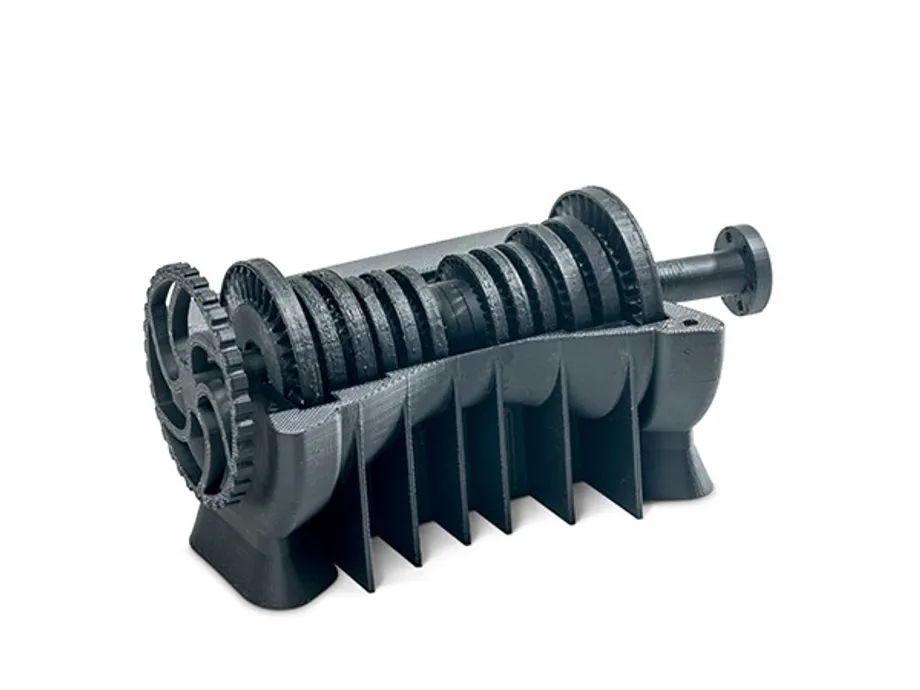Steam technology
Steam technology originally referred to steam engines, heat engines that perform mechanical work using steam as a working fluid.
Thomas Newcomen's atmospheric engine was the first commercial true steam engine using a piston (1712) for pumping a mine. In 1781 James Watt patented a steam engine that produced continuous rotary motion. By 1883, engines that could provide 10,000hp had become feasible.
Steam engines could also be applied to vehicles such as traction engines and the railway locomotives. The stationary steam engine was a key component of the Industrial Revolution, allowing factories to locate where water power was unavailable.
3D print of steam turbine
This is a 3D print of a steam turbine, a device that extracts thermal energy from pressurised steam and uses it to do mechanical work on a rotating output shaft.
Its modern manifestation was invented by Sir Charles Parsons in 1884. Because the turbine generates rotary motion, it is particularly suited to be used to drive an electrical generator.
The steam turbine is a form of heat engine that derives much of its improvement in thermodynamic efficiency from the use of multiple stages in the expansion of steam.
Donated by Denford

